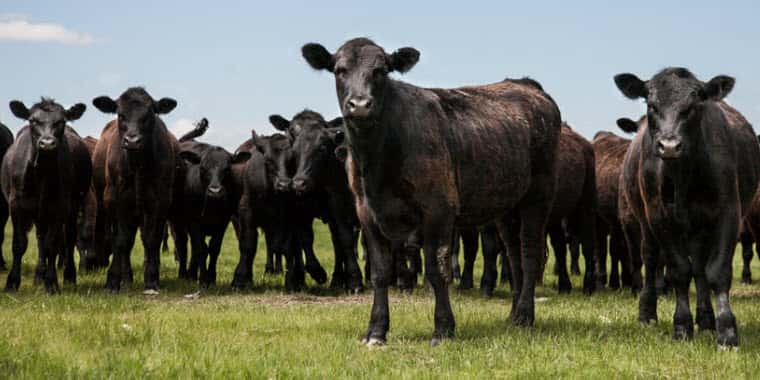NDSU Extension– A recent conversation regarding economic drivers in the cow-calf enterprise left me with a lot to think about.
Let me summarize: The thoroughfare to consumers begins with the conception and birth of a calf that slowly morphs into beef. The beef industry is huge, so reflecting is good as the calf moves from the cow-calf producer to other beef enterprises throughout the beef chain.
Much like the source of a mighty river, at some point, only melting snow or raindrops were present. Mighty rivers do not become majestic if the snow does not melt or the rain does not fall. Everything starts somewhere, albeit small, and needs to grow. The cow-calf industry is no different.
Let us consider some thoughts regarding the cow-calf enterprise. Generally, the cow-calf producer has had some cushion between total expenses and market price (positive cash flow). Expenses, however, loom on the horizon as historically high, and given the relative low rates of return on investment, along with the challenges of finding adequate labor, some cattle producers are giving up the reins.
What steps can producers take to improve probability and, ultimately, return on investment? Almost anybody can buy a cow and bull, and produce a calf, but that is not the definition of a cow-calf enterprise. The operation needs to have some scale, and I usually review data that involve operations of 50 or more cows. But today, even 100 cows probably are below the threshold of “economy of scale.”
I will be the first to state loudly that the cow-calf business has many economic drivers, and “economy of scale” does not have to be one of them. Why? Cow producers like cows and enjoy the lifestyle of raising beef. But a positive cash flow will put more smiles on the producers’ faces.
That being said, how do we do that? Here are some thoughts.
First, recognize the environment one is in and quit fighting it. Building to beat Mother Nature is futile; feed the cows, breed the cows and calve the cows when the weather is right.
The weather is right when cool-season grasses are growing actively. As a consequence of calving when the grass grows, a shift occurs when the third trimester of pregnancy starts, creating the opportunity for alternative winter forage programs.
At the Dickinson Research Extension Center, we turn bulls out on Aug. 1. The third trimester starts Feb. 12, and calving starts May 7. Winter feeds costs, which are 70-plus percent of the total cow-calf costs, have the potential to decline significantly, depending on the extent that “extensive winter forage” is utilized.
Second, recognize the importance of monitoring cow size. The maintenance of excessively large cows has proven difficult to offset with increased weaning weights. The center has targeted mature cow size at 1,100 to 1,300 pounds. Although individual calf weights will be lighter, total calf weight based on calves produced per acre will be greater, resulting in more total pounds of calf.
Third, recognize the importance of good bull selection using technological advancements that improve accuracy. Generally, keep expected progeny differences (EPDs) above the 50th percentile within the desired traits and breed. As matter of practicality, become comfortable with bulls that are above the 50th percentile but may not exceed the upper 30th percentile for commercial production.
Fourth, recognize the value of breeding systems, maximizing the traits of interest in the terminal sire program while balancing appropriate traits on the maternal side. Let the cow save you money and the bull make you money.
At the center, 1,100- to 1,300-pound cows bred to bulls above the 50th percentile for growth and marbling and in the upper 10th percentile for rib-eye area have an advantage of $26 per acre of ranchland over traditional cows. The calves are summered on forage, and after a short feedlot stay, they are harvested at an average weight of 1,450 pounds, with 94 percent at the “choice” grade at an average yield grade of 2.9.
The search for the next generation of cow-calf producers has a tremendous opportunity for success, provided some simple targeted goals based on real numbers are put in place. Efficient beef production starts when the bull mates with a cow and biological efficiency mates with economic efficiency.
And just like the majestic river that starts with a few raindrops and a small stream, beef production needs to start with the cow-calf producer. Fishing in the big river may catch some big fish, but do not let fishing tales run the operation.
For new cow-calf producers, the single biggest mistake made is the tendency to work hard physically and set aside the homework. Each cow-calf enterprise is a unique business, and businesses need records. Focus, listen and learn.
May you find all your ear tags.
###
Kris Ringwall, Beef Specialist
Dickinson Research Extension Center


